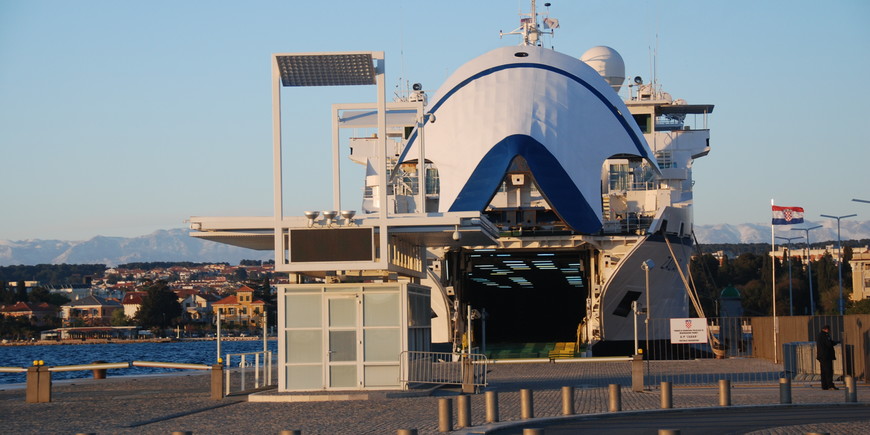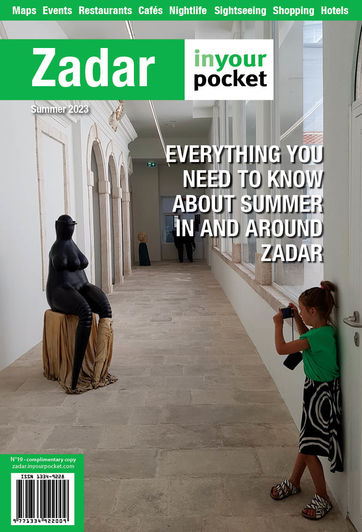So you have finally reached our beautiful city, having safely placed your two feet on Croatian soil rest assured as we have all the necessary information on transport and arrival points to help you get around and find your way.
Jump to:
Arriving in Zadar
By boat
Your arrival in Zadar is spectacular: the passenger boats dock right on the Old Town peninsula. All the amenities of the Old Town are just behind that defensive wall you see there.
Jadrolinija's international services connect Zadar with Ancona (Italy) almost every day. Local ferries (trajektne linije) run from Gaženica Ferry Port (R-5) and passenger boats (brodske linije) run from Zadar Old Town (J-5) to the surrounding islands. The islands are simply gorgeous, so it’s well worth making the pleasant trip, and absolutely affordable. Not all services run daily, so do take care when studying the timetable, or ask for help at the office. These routes are for car ferries unless otherwise stated. Catamarans do not take cars on board.Tickets for local catamarans and international ferries can be purchased online. For local catamarans it is possible to book one month in advance (maximum) and no later than 24 hours prior to travelling.
By bus
The bus station is on the crossroads northeast of the Old Town heading towards Split, Rijeka and Zagreb. Because the bus services are so much used, the bus station is a real hub and has everything you need. Left luggage (garderoba) is in the ticket hall and works from 06:00 to 22:00 and costs 0,53 € per hour. Toilets: located on the right as you face the building from the platforms, 0,40€ . Public phones are on the platforms and in front of the building. Getting to town: On the road in front of the bus station are bus stops for the local lines which take you to the Old Town, Borik, Diklo and the suburbs. A 1,59 € ticket bought inside the bus gets you a one way trip.The ticket office at the station is open 05:40 - 22:00.
By car
The A1 motorway between Zagreb and Dalmatia is a complete, navigable whole with no interruptions. Zadar is the first port of call, and the motorway continues past all the major resorts on the way to Split and beyond. Journey time between Zagreb and Zadar is about 2.5 hours depending on when you travel. Since most holidaymakers travel at weekends, there can be congestion on borders, at motorway toll booths, intersections, ferry terminals and around coastal resorts on Fridays and Sundays. If you can’t avoid travelling at weekends, you may find that the roads clear up in the evening. Tolls are payable on Croatian motorways – most currencies are accepted.
By plane
Zadar’s airport (zračna luka) is in Zemunik Donji, 9km southeast of the city. Changing money: OTP banka in the passenger terminal operates an exchange service and an ATM. Getting to town: Liburnija runs buses between the terminal, the city bus station and the quayside near the ferryport on the Old Town peninsula. Bus lines are organised to connect with the flight timetable, and one-way tickets cost 4,65 €.
By train
Since Zadar doesn’t have a high-speed rail link to mainline routes in Croatia, a new service organised by Croatian Railways enables you to catch a bus from Zadar to Knin, which is on the high speed route connecting Zagreb and Split, enabling you to travel onward in either direction.Your ticket covers both bus and rail parts of the journey, and the bus stops en route according to the timetable.The ticket office is open 07:10 - 14:40. Closed Sat, Sun. Outside those times tickets can be bought on board the trains, online on www.hzpp.hr or via smartphone application HZPP Tickets.The railway station doesn’t have many facilities, but since you are next door to the bus station you can use the services available there. Getting to town: On the road in front of the bus station are bus stops for the local lines which take you to the Old Town, Borik, Diklo and the suburbs. A 10kn ticket bought inside the bus gets you a one way trip.
Tourist Information
Tourist Information Centre is situated at Cedulin Palace. This palace’s history spans noble beginnings, conversion into a military hospital, a civilian hospital, and now, after restoration in 2017, it houses Zadar’s Tourist Information Centre, the Zadar Tourist Board and Zadar Region Tourist Board. The stone-flagged courtyard with its wellhead is an elegant new venue for social and cultural events.





